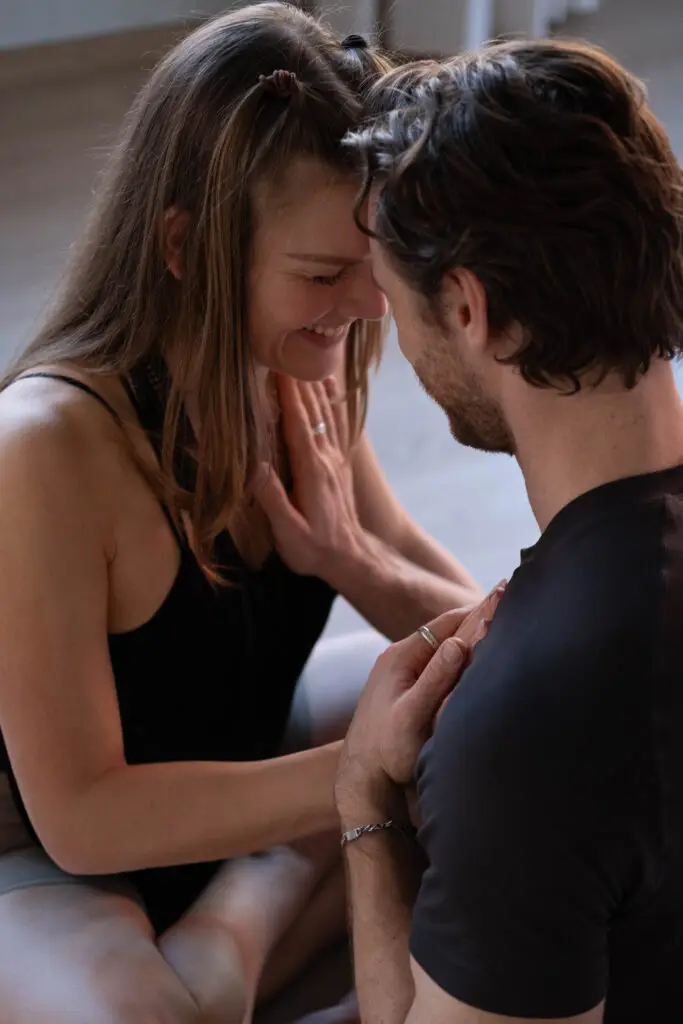In a world where yoga has taken on many playful and sometimes quirky forms—from beer yoga to dog yoga—Connected Couple Yoga offers something distinct. Once experienced, it becomes clear that this practice stands in a category of its own.
It’s important to note the distinction between Connected Couple Yoga and what is commonly known as Partner Yoga. While the two may seem similar at a glance, their intentions and depth differ significantly.
Partner Yoga typically emphasizes shared yoga poses and stretches. It’s fun, accessible, and often practiced with friends, family members, or even colleagues. The focus is on physical collaboration and light-hearted connection.
Connected Couple Yoga, by contrast, is designed exclusively for romantic partners. Its primary focus is on fostering intimacy, emotional presence, and deep connection between two people. Many of the exercises are rooted in trust, vulnerability, and non-verbal communication—making them unsuitable for casual or non-romantic relationships.
Connected Couple Yoga creates a safe and structured space to explore the dynamics of giving and receiving, masculine and feminine energy, and the subtle interplay of roles within a relationship. It’s a grounded yet playful way to deepen connection, without relying on esoteric or inaccessible language or techniques.
Whether one partner is experienced in yoga and the other is not, the practice remains inclusive. Like dancing, one person can lead by example, encouraging mutual growth and shared discovery. There are no prerequisites—just a willingness to be present with one another.
If a couple feels comfortable with closeness and openness, Connected Couple Yoga provides a meaningful space to explore both.

A Transformative and Playful Experience
Connected Couple Yoga offers a shared experience that blends touch, trust, and communication. With roots in Thai Yoga, partner stretches, and gentle intimacy exercises, the practice becomes a safe playground for emotional exploration.
Many couples describe it as “non-verbal therapy.” Without needing to speak, long-held patterns in the relationship can surface. It invites reflection on questions like:
• Who initiates or leads?
• How is support or challenge handled?
• What does trust feel like in the body?
In early sessions, guided verbal communication supports the process. As the practice deepens, words give way to intuitive, non-verbal exchange—much like dancing.
This shift fosters a deeper emotional bond and allows couples to listen with more than just ears—to be present with empathy and awareness.


